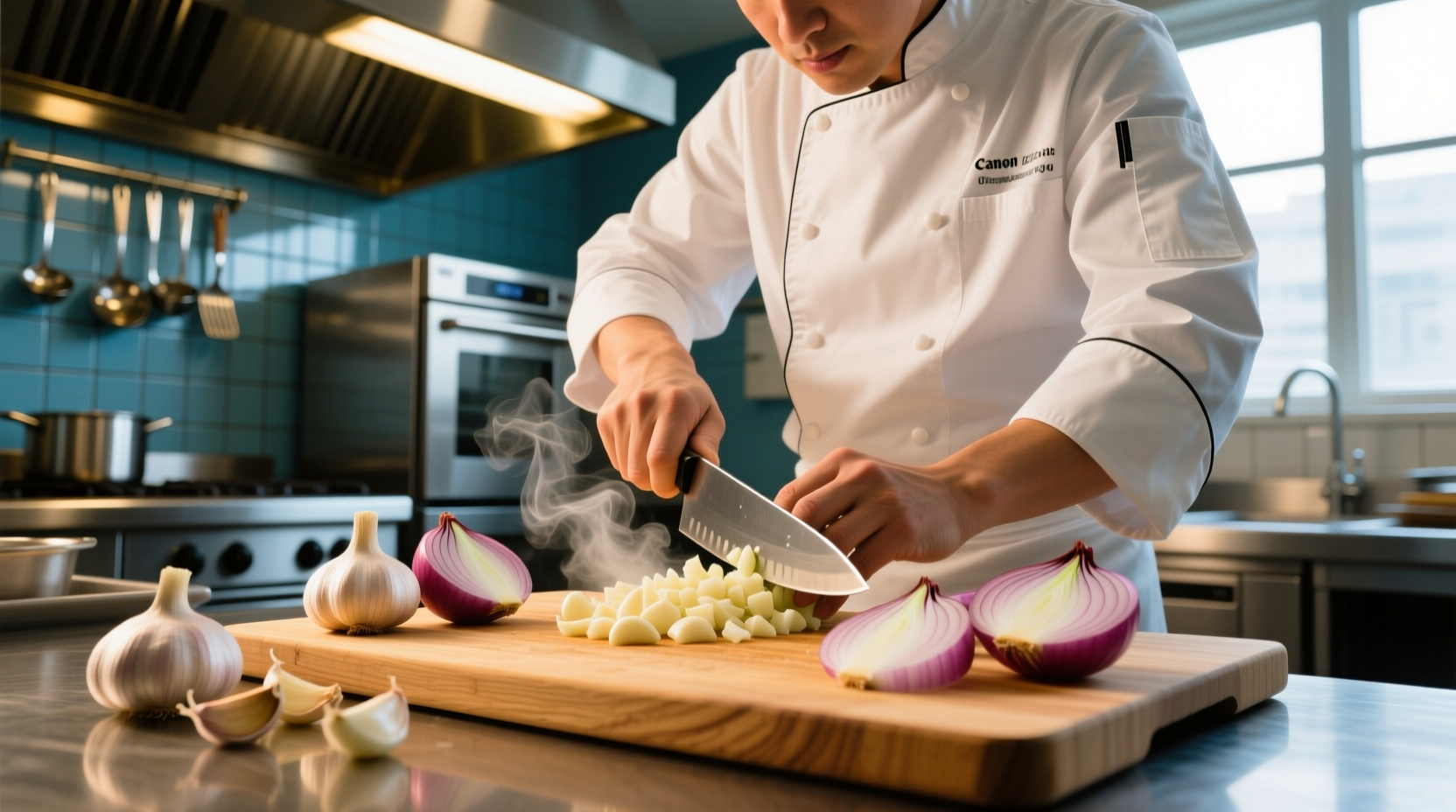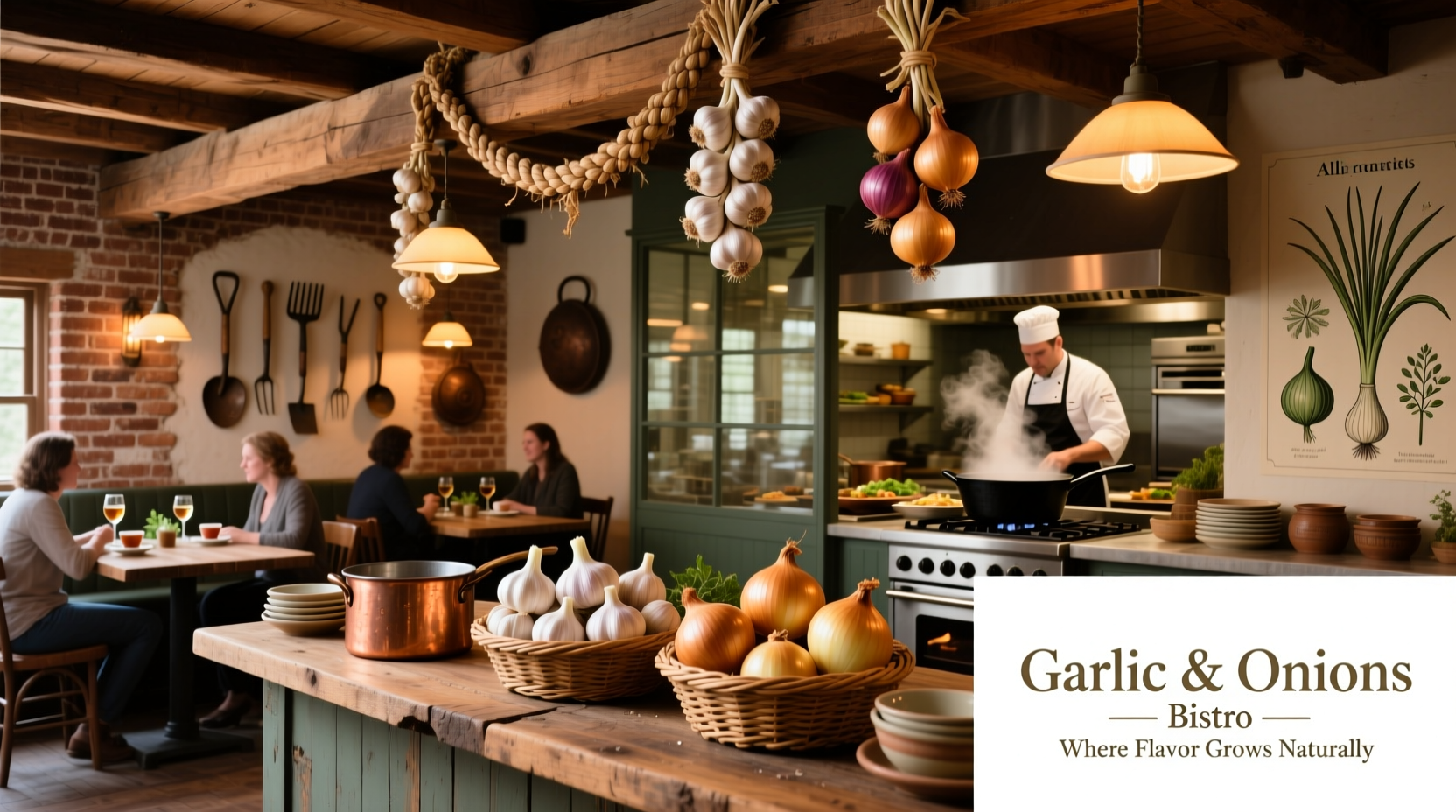When searching for a "garlic and onions restaurant," you're likely seeking establishments that showcase these foundational ingredients with expertise. While no single universally recognized restaurant bears this exact name, countless authentic eateries worldwide specialize in dishes where garlic and onions take center stage. These ingredients form the sofrito, mirepoix, and aromatic base of global cuisines, creating the flavor foundation for everything from French consommé to Chinese jianbing.
Understanding the Culinary Significance of Garlic and Onions
Professional chefs consider garlic and onions the "holy trinity" of flavor development. According to the USDA FoodData Central, these alliums contain over 400 distinct flavor compounds that transform when cooked. The Maillard reaction - that magical browning process - creates complex umami notes that can't be replicated with artificial substitutes.
| Cuisine Type | Signature Allium Technique | Common Dish Applications |
|---|---|---|
| Mediterranean | Slow caramelization | Ratatouille, aioli, sofrito |
| Asian | High-heat wok searing | Stir-fries, dumpling fillings, curry bases |
| Mexican | Dry roasting before blending | Salsas, moles, adobos |
| French | Mirepoix (onion-carrot-celery) | Bouillabaisse, coq au vin, sauces |
How Restaurants Master These Essential Ingredients
Authentic establishments specializing in garlic and onion dishes follow precise techniques that home cooks often miss. Professional kitchens understand that temperature control makes all the difference - garlic burns at 325°F (163°C), turning bitter, while onions need 25-30 minutes of slow cooking to develop their natural sweetness.
At top-tier restaurants, you'll notice these quality markers:
- Fresh, seasonal alliums sourced from local growers
- Multiple preparation methods (raw, roasted, caramelized, fried)
- Thoughtful pairing with complementary ingredients
- Absence of overpowering artificial garlic flavors

The Evolution of Allium-Centric Dining
Garlic and onions have evolved from peasant ingredients to restaurant stars. This culinary timeline reveals their journey:
- Ancient Times: Used medicinally in Egypt and Greece
- Medieval Era: Considered "food for the poor" in European courts
- 19th Century: Emerged in French haute cuisine through Escoffier's techniques
- 1970s: Gained popularity through California cuisine movement
- Present Day: Featured in Michelin-starred establishments worldwide
Finding Authentic Allium-Focused Establishments
When searching for quality "garlic and onions restaurants," look beyond the name. Many authentic establishments don't use these ingredients in their title but feature them prominently in their cooking philosophy. The James Beard Foundation's 2024 Restaurant Trends Report shows 68% of top-rated chefs consider allium mastery essential to their cuisine.
Use these practical search strategies:
- Search for "restaurants with house-made aioli" or "caramelized onion specialties"
- Look for menus featuring multiple allium preparations
- Check chef bios for Mediterranean or French training
- Read reviews mentioning specific allium dishes
Must-Try Dishes Featuring Garlic and Onions
When visiting restaurants specializing in these ingredients, seek these signature preparations:
- French Onion Soup - Proper versions use 3+ pounds of onions per serving, slowly caramelized
- Garlic Confit - Whole cloves slow-cooked in olive oil, creating sweet, spreadable garlic
- Allium Jam - A modern restaurant specialty blending multiple onion varieties
- Scallion Pancakes - Chinese specialty where layered dough and scallions create flaky perfection
Professional chefs recommend asking about preparation methods when ordering. "How long do you caramelize your onions?" or "What garlic varieties do you feature seasonally?" reveals a kitchen's true commitment to these ingredients.
Common Misconceptions About Allium-Centric Restaurants
Many diners misunderstand what makes a restaurant genuinely specialize in garlic and onions. The Culinary Institute of America's flavor research shows several key distinctions:
- Myth: More garlic always means better quality
Reality: Balance is crucial - overpowering garlic indicates poor technique - Myth: Pre-minced garlic in jars equals fresh
Reality: Freshly prepared alliums contain allicin compounds that degrade quickly - Myth: All restaurants use the same onion varieties
Reality: Top establishments rotate through 5+ onion types seasonally (Vidalia, Walla Walla, Spanish, Red, Sweet)
Understanding these distinctions helps identify truly exceptional establishments versus those merely using garlic and onions as marketing buzzwords.
Bringing Restaurant-Quality Allium Techniques Home
You don't need to find a specific "garlic and onions restaurant" to enjoy these flavors. Professional techniques you can replicate at home:
- The 40-30-20 Rule: For perfect caramelized onions, cook 40 minutes on medium, 30 on medium-low, 20 on low
- Garlic Oil Infusion: Cold-infuse garlic in oil for 24 hours instead of frying to avoid bitterness
- Layered Flavor Building: Add onions first, garlic later in cooking to prevent burning
These methods transform simple ingredients into restaurant-quality results, helping you appreciate why professional kitchens treat garlic and onions with such care.











 浙公网安备
33010002000092号
浙公网安备
33010002000092号 浙B2-20120091-4
浙B2-20120091-4